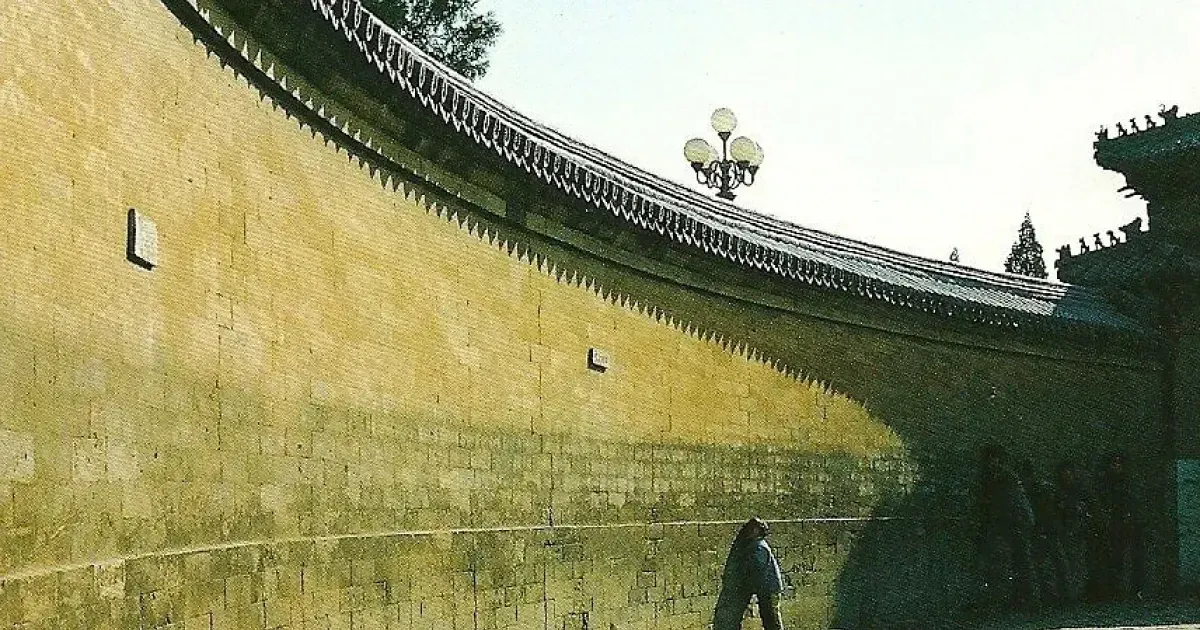Welcome to Facts Vibes! Today, we’re diving into the fascinating world of the Temple of Heaven. Uncover intriguing facts and historical insights about this iconic masterpiece of Chinese architecture. Get ready to explore the cultural significance and architectural marvels of the Temple of Heaven. Let’s embark on this enlightening journey together!
The Fascinating History of the Temple of Heaven
The Temple of Heaven in Beijing, China, holds a fascinating history dating back to the early 15th century. Constructed during the reign of the Yongle Emperor of the Ming dynasty, this architectural marvel was intended as a site for ceremonial rites and prayers for a fruitful harvest. The Temple of Heaven served as a sacred space where the emperor, recognized as the “Son of Heaven,” could communicate with the heavenly realm and seek divine guidance for the well-being of his people.
The design and layout of the Temple of Heaven are steeped in symbolism and ancient Chinese cosmology. The complex comprises three main groups of structures, all connected by a central axis known as the Divine Way. The Hall of Prayer for Good Harvests, with its iconic triple-gabled circular roof, stands as the centerpiece of the complex and remains a remarkable example of traditional Chinese architecture.
Throughout its existence, the Temple of Heaven has witnessed significant historical events, including the Qing dynasty’s annual ceremonies and the dawn of a new era with the founding of the Republic of China. Its enduring presence and cultural significance led to its inscription as a UNESCO World Heritage Site in 1998, a testament to its architectural and spiritual importance on a global scale.
Today, the Temple of Heaven continues to attract visitors from around the world, offering a glimpse into the rich history and profound spiritual beliefs of ancient China. Its serene ambiance and breathtaking beauty stand as a reminder of the enduring legacy of this awe-inspiring architectural wonder.
Ultimately, the Temple of Heaven remains a timeless symbol of China’s cultural heritage and a place where the ancient traditions of worship and reverence for nature converge in a mesmerizing display of architectural splendor.
I hope you find this information helpful!
Most popular facts
The Temple of Heaven is a UNESCO World Heritage Site located in Beijing, China.
The Temple of Heaven is a UNESCO World Heritage Site located in Beijing, China.
It was constructed from 1406 to 1420 during the reign of the Yongle Emperor.
The construction of the Ming Dynasty’s Forbidden City took place from 1406 to 1420 during the reign of the Yongle Emperor.
The temple complex covers an area of
The temple complex covers an area of 75 hectares.
73 square kilometers.
73 square kilometers.
The main structures within the complex are the Circular Mound Altar, the Imperial Vault of Heaven, and the Hall of Prayer for Good Harvests.
The main structures within the complex are the Circular Mound Altar, the Imperial Vault of Heaven, and the Hall of Prayer for Good Harvests.
The architecture of the buildings and the layout of the complex reflect the cosmological beliefs of the Ming and Qing dynasties.
The architecture of the buildings and the layout of the complex reflect the cosmological beliefs of the Ming and Qing dynasties.
The Hall of Prayer for Good Harvests is a wooden structure with a triple-gabled circular roof, symbolizing the connection between heaven and earth.
The Hall of Prayer for Good Harvests is a wooden structure with a triple-gabled circular roof, symbolizing the connection between heaven and earth.
The Circular Mound Altar is where the Emperor would make offerings to the gods for a good harvest.
The Circular Mound Altar is where the Emperor would make offerings to the gods for a good harvest.
The temple complex was a site for annual ceremonies performed by the Emperor to ensure good harvests.
The temple complex was a site for annual ceremonies performed by the Emperor to ensure good harvests.
The colors of the buildings in the complex are symbolic, with red representing the Emperor and yellow representing the Emperor’s exclusive connection to heaven.
The colors of the buildings in the complex are symbolic, with red representing the Emperor and yellow representing the Emperor’s exclusive connection to heaven.
The temple complex is surrounded by a large park where locals practice tai chi, fly kites, and engage in other recreational activities.
The temple complex is surrounded by a large park where locals practice tai chi, fly kites, and engage in other recreational activities.
The Echo Wall within the complex is known for its unique acoustic properties, where a whisper can travel from one end of the wall to the other.
The Echo Wall within the complex is known for its unique acoustic properties, where a whisper can travel from one end of the wall to the other.
The temple complex is a popular tourist attraction, drawing millions of visitors each year.
The temple complex is a popular tourist attraction, drawing millions of visitors each year.
It has been featured in various films, TV shows, and documentaries, showcasing its historical and cultural significance.
The location has been featured in various films, TV shows, and documentaries, showcasing its historical and cultural significance.
The architectural design and layout of the Temple of Heaven have inspired numerous other structures in China and around the world.
The architectural design and layout of the Temple of Heaven have inspired numerous other structures in China and around the world.
The Temple of Heaven represents an important symbol of Chinese imperial worship and traditional architecture.
The Temple of Heaven represents an important symbol of Chinese imperial worship and traditional architecture.
In conclusion, the Temple of Heaven is a remarkable architectural wonder symbolizing the harmony between heaven and earth, and its historical and cultural significance makes it a must-visit destination for anyone interested in Chinese heritage and traditional beliefs. Whether for its stunning architecture, beautiful gardens, or spiritual significance, the Temple of Heaven is a testament to the rich history and profound symbolism of ancient Chinese civilization.
